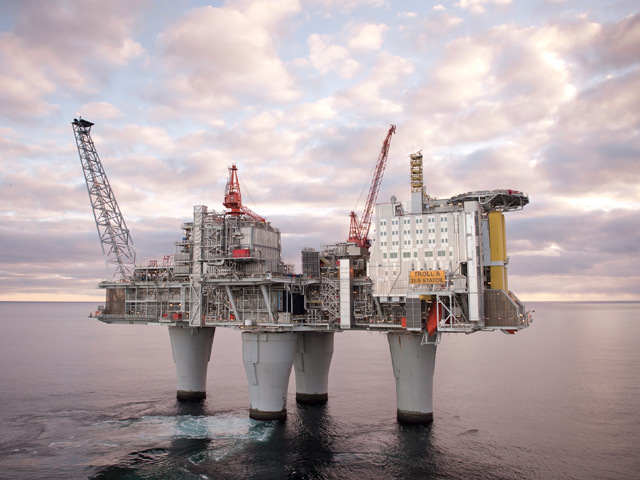
Statoil marked 20 years this week since the start of oil production from the Troll field which has been Norway’s largest oil producer for the last three years.
In the past two decades more than one billion barrels has been produced with an income of NOK460billion.
The Troll oil and gas adventure started with the awarding of the fourth licensing round in 1979.
In July of that year, Borgny Dolphin began exploration drilling and four months later Troll was a fact.
Øivind Dahl-Stamnes, head of Troll production, said: “Troll oil is the impossible made possible. Only a few believed in extracting the thin oil zone at Troll, and through a burning desire to make it happen, determination and innovation, Troll oil became reality.”
A thin oil-bearing layer stretches across the entire field, but is only viable in two provinces in Troll West.
Statoil said the “greatest challenge” when planning the field had been to develop technology to extract the thin oil zones without the wells producing too much gas.
All of the production wells at Troll are horizontal wells which means drilling in two stages, initially down to the reservoir which is 1,600 metres below the seabed, and then up to 5,500 metres horizontally into the reservoir.
Most of the wells are so-called branch wells, which mean that they have two or three horizontal sections that are gathered at a crossroad in the reservoir.
The oil is produced using 15 seabed frames with a total of 121 well slots linked to the floating production platforms Troll B and Troll C.
Statoil said to date, 200 wells have been drilled, around Troll B and C which combined have produced 1.56 billion barrels of oil.
The current recovery rate for oil is 40%, with a goal to reach 52%.
The oil is transported to Mongstad from Troll B through the Troll oil pipeline and from Troll C through the Troll pipeline II.
Recommended for you
